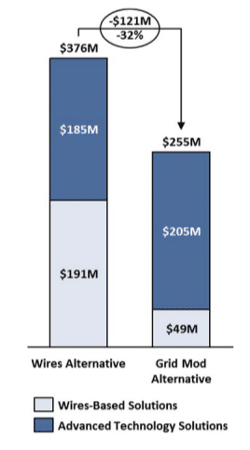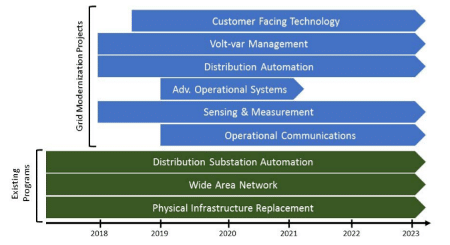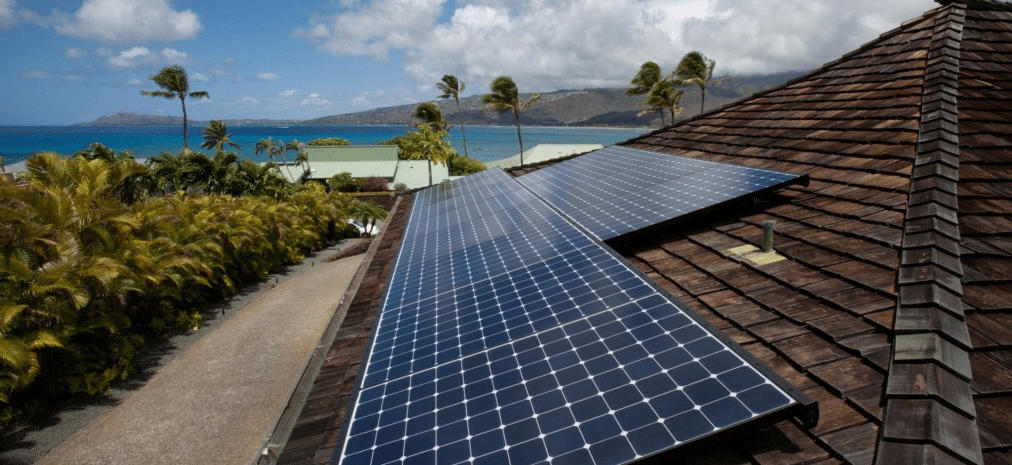Hawaiian Electric Companies (HECO) has had a complicated relationship with solar. Like any other entity in Hawaii, it has stated its interest in getting the state’s electricity supply off of expensive imported petroleum. However, it has also been savaged by local solar installers and many consumers, who say that the utility is not doing enough to integrate more solar and is trampling over their right to generate their own power.
Meanwhile, HECO has to deal with the most ambitious renewable energy mandate in the nation, and one of the most ambitious in the world, which requires that it procure 100% of its electricity from renewables by 2045. If that weren’t daunting enough, it is dealing with a series of island grids, which cannot import or export power to and from other island chains or states.
The draft grid modernization plan which HECO released late last week can be seen in light of these contradictions, as well as the requirement by state regulators that such grid modernization be done cost-effectively. After the state’s Public Utilities Commission rejected a $340 million grid modernization plan six months ago, HECO has come back with a plan whose first phase involves outlays of $205 million through 2023.
 Overall, the new plan will shift the bulk of funding from physical infrastructure-based “wires” solutions to “grid modernization” solutions, with HECO planning to spend only $49 million on wires solutions through 2023.
Overall, the new plan will shift the bulk of funding from physical infrastructure-based “wires” solutions to “grid modernization” solutions, with HECO planning to spend only $49 million on wires solutions through 2023.
The utility states that the initial focus of the plan is to mitigate “existing service quality issues that are arising” so as to continue to enable ongoing customer adoption of solar and batteries. HECO also seeks to create a platform whereby distributed energy resources – a broad category that includes not only solar and batteries but demand response and other technologies – can help to meet the state’s 2045 renewable energy mandate.
Smart meters & advanced inverters
This will require deployment of technology both on the customer and utility side of the meter. Unlike earlier plans which called for widespread deployment of smart meters, in order to save costs HECO is now calling for such meters to be deployed “surgically”, which will include customers with rooftop solar on circuits that HECO considers “saturated” and those that are nearing such levels. Such deployment will include related software to help customers make better decisions about usage.

HECO
Additionally, the utility plans to deploy more devices to sense faults on its side of the meter and additional volt-var controllers on the distribution grid. Starting in 2019 it is looking to deploy “field operational communications” systems to be chosen through a competitive procurement.
Looking farther forward the plan will also include deployment of advanced inverter software, and HECO has stressed the importance of inverters with ride-through functionality and the ability to provide reactive power, which can be used for voltage stabilization. Like California, Hawaii is attempting to develop standards for advanced inverter functionality, which will allow solar to provide many of the grid support services that have traditionally been provided by large generators (pv magazine has covered this issue in detail in previous editions of our print publication).
HECO has acknowledged that the deployment of such inverters can allow more solar to be put onto distribution circuits, and has additionally noted that distributed inverters closer to loads can provide better voltage control than centralized generation, which has been argued by Clean Coalition and other groups.
Tripling distributed solar
A central problem that HECO is facing is that the state already has high levels of distributed solar penetration, and that such deployment was done before the software to perform these advanced functions become commonplace. While the overall penetration of solar in Hawaii’s electric mix is less than that in California, it has fewer large-scale solar projects and more rooftop PV, and HECO estimates that the state currently hosts around 80,000 distributed PV systems.
But despite the allegations of local installers, HECO gave no indication that it is planning to stop deployment of solar. The utility says that it expects the roll-out of new technologies to allow it to triple the amount of private rooftop solar, which would bring Hawaii from 8.7% of annual electricity generation from solar as of 2016 to 25-30% – well in excess of the level that has ever been integrated in a territory the size of the state.
In order to integrate this additional solar, HECO has stresses the value of “variable pricing” such as time of use rates, which it has rolled out on pilot basis. The utility says that in addition to allowing the integration of more solar, TOU rates will also assist the economics of electric vehicles by encouraging charging during the solar peak.
HECO also emphasizes that the document was created with extensive stakeholder engagement, and has now opened it up for a round of comments. A final plan is expected in August, which will make way for Hawaii’s adventure with renewables and distributed energy to continue.
This content is protected by copyright and may not be reused. If you want to cooperate with us and would like to reuse some of our content, please contact: editors@pv-magazine.com.









By submitting this form you agree to pv magazine using your data for the purposes of publishing your comment.
Your personal data will only be disclosed or otherwise transmitted to third parties for the purposes of spam filtering or if this is necessary for technical maintenance of the website. Any other transfer to third parties will not take place unless this is justified on the basis of applicable data protection regulations or if pv magazine is legally obliged to do so.
You may revoke this consent at any time with effect for the future, in which case your personal data will be deleted immediately. Otherwise, your data will be deleted if pv magazine has processed your request or the purpose of data storage is fulfilled.
Further information on data privacy can be found in our Data Protection Policy.